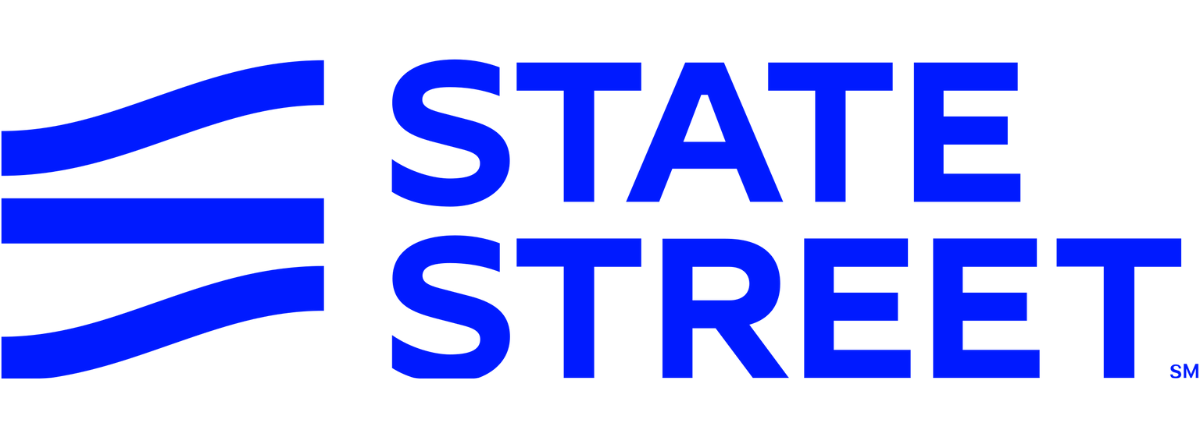Travel is an often-cited example of an industry that was hit by a swift wave of disruption by the advent of online commerce.
It is true that holidaymakers use to book their trips more cheaply and conveniently than before, but the websites and apps are here to stay and will continue to take market share from traditional travel agencies. However, the internet has yet to replace the aeroplane as their primary mode of transport, or the beach as their ultimate destination. Similarly, Amazon may have disrupted the record store, and Spotify the actual record and the record label, but the songs people listen to still sound the same.
The technology underpinning crypto currencies could dramatically alter the way other financial assets are utilised in investors’ portfolios as well as distributed by managers and other financial service providers in the same way as technology has revolutionised the industries above – by reducing the costs of management, distribution while bringing greater choice and easier interfaces to investors.
Transformative potential
At State Street, we have had numerous discussions with clients, regulators and industry stakeholders about the transformative potential of blockchain and distributed ledger for the asset management industry.
One longstanding trend that is likely to be more fully realised by this technology than has been possible up until now, is the creation of liquid, daily tradeable assets out of illiquid assets like real estate, infrastructure and private equity.
The ‘fractionalisation’ of these assets – creating digital tokens or ‘token-shares’ that represent shares in a physical building or recreate the liquidity and ease of trading of listed equity – is a step forward in the direction the industry has been attempting to travel for a long time using derivatives and unitised property funds.
The tokenisation of these assets either as issued digital securities or as digital representations of ownership permits atomic settlement, reducing costs and capital requirements and enables the expansion of eligible collateral and near instantaneous movements of liquidity.
This particular benefit of tokenisation will especially be felt by retail investors, who have long been searching for more and better access to these predominantly institutional, private market asset classes, but unable to easily or cheaply access them through retail and defined contribution portfolios with compulsory liquidity requirements.
Indeed, research from digital assets platform Finoa, projects that alternative assets, infrastructure (‘other tokenisable assets’) and unlisted equity, will make up approximately 45% of an expected $24 trillion market for tokenised assets by 2027.
Role of ETF wrapper
Beyond illiquid assets, the speed and efficiency of trading on the blockchain, removing time consuming reconciliation processes, could create applications for tokenisation in already liquid listed shares or units.
But the important thing to note about these changes is that they will ultimately be made in the service of generating outcomes that investors have been seeking (and providers seeking to deliver to them) all along; namely improved returns, investment choice and efficiency of service, coupled with lower costs.
So even the most potentially disruptive elements of crypto and tokenisation revolutions will, in some ways, end up combining and making accommodations with legacy structures and methods.
Between the traditional worlds of asset management and its supplementary financial services like custody banking and fund administration on one side, and the new world of fintech facilitated liquidity and tokenisation on the other, there will be significant disruption and change.
But to the end investor, especially the individual consumer, much of this will not be visible and what they will notice will be the speed and ease with which they can move their money in and out of an increasingly diversified range of asset classes.
Retail investors will most likely access these new token-shares through a combination of the way in which they currently trade listed, liquid shares and the funds containing them (increasingly online and app-based sharedealing platforms) and the way they trade existing blockchain-based investments like cryptocurrencies (i.e. digital wallets).
In terms of the interface used by the end consumer, these will likely be the same, and easy access, intuitive single platforms for digital and traditional assets (as well as bank accounts containing cash) will become the norm.
The architecture that underpins this new, easier system of transactions will where the major changes take place – a system of accounting and traditional ledgers managed by banks on behalf of investment institutions and platforms replaced by a system of blockchain-based ‘smart contracts’ governing the issuance and transfer of tokenised assets.
The role of intermediaries such as banks in this environment will no longer be the manual updating and exchange of large volumes of data on behalf of participating institutions, but the issuance of the contracts that tokenise the underlying asset and their management through coding and technological architecture.
Banks will play a significant role in the issuance and servicing of digital assets in the future. In particular, ETFs as well as mutual funds stand to benefit by being tokenise creating a new way for new participants to issue, hold, trade and service assets. The benefits of blockchain technology will allow for immediate settlement as well as seamless flow between asset classes via ETFs and mutual funds.
Banks will be the leaders in the space because tokenisation will be a service provided by the banks who service these assets. The nature of the interplay of tokenised assets with traditional financial market infrastructure and the effect it will have on regulatory obligations of intermediaries such as transfer agents and distributors is a critical aspect in the development of a tokenised ETF marketplace.
Fund management will still play a role in this ecosystem. As with music and beaches, retail investors will continue to want bundles of assets representing the best companies, sectors and geographic regions for returns, whether that representation is via blockchain-based tokens or traditional stocks and bonds.
Like today, some investors will want active managers to curate funds of the best opportunities, based on their detailed analysis of individual investments. But many will want the lower costs and widespread diversification that comes through investing in indices and other large buckets of passively selected assets.
And, in this sphere, the ETF is in poll position to become a preferred fund-based wrapper for retail investors looking for access to private markets and other illiquid alternatives.
Firstly, it is the fastest-growing fund type of the past decade and its existing advantages in terms of liquidity and low fees will remain in a digital asset fund environment. Also, ETFs are at the forefront of existing use cases for blockchain in fund management.
Along with other exchange traded vehicles, such as ETPs and ETNs, they make up 46 of the 73 funds globally, with an AUM of approximately $70bn, either holding direct crypto currency (mostly bitcoin) or trading cryptocurrency futures, according to Morgan Stanley data.
And this early mover status in the crypto space is typical of the spirit of innovation which gave birth to ETFs and has been a feature of the market ever since. They continue to be more cost effective and to outgrow mutual funds and the digital ETF market is expected to continue to grow as the ETF structure provides a low fee, transparent, regulated and listed vehicle by which institutions and other investors can add cryptocurrency and, in the future, digital asset exposure to their portfolios.
The future is coming but and, as with previous technological disruptions in legacy industries, the changes will be major. But for those who adapt, it will mean the ability to offer improvements that customers will see and feel as they interact with their savings and investments.
This article first appeared in Crypto Unlocked: In the bleak midwinter. See the full issue here: https://btpubs.co.uk/publication/?m=67100&i=762402&p=34&ver=html5
State Street DigitalSM Disclaimer InformationThis communication is provided by State Street Bank and Trust Company, regulated by the Federal Reserve Board, and/or State Street Bank International GmbH, authorized by Deutsche Bundesbank and supervised by the German Federal FinancialSupervisory Authority, or their bank and non-bank affiliates (“State Street”). Products and services are offered by State Street to professional clients or eligible counterparties or their equivalent and may not be available in all jurisdictions. Activitiesdescribed herein may be conducted from offshore. The information provided is only general and has not been reviewed by any regulatory authority.This communication is intended for general marketing purposes, and the information contained herein has not been prepared in accordance with legal requirements designed to promote the independence of investment research. It is for clients todetermine whether they are permitted to receive research of any nature. It is not intended to suggest or recommend any transaction, investment, or investment strategy, does not constitute investment research, nor does it purport to be comprehensiveor intended to replace the exercise of an investor’s own careful independent review and judgment regarding any investment decision.This communication is not intended for retail clients, nor for distribution to, and may not be relied upon by, any person or entity in any jurisdiction or country where such distribution or use would be contrary to applicable law or regulation. Thiscommunication or any portion hereof may not be reprinted, sold or redistributed without the prior written consent of State Street. This communication and the information herein does not constitute investment, legal, or tax advice and is not a solicitationto buy or sell securities or any financial instrument nor is it intended to constitute a binding contractual arrangement or commitment by State Street of any kind. The information provided does not take into account any particular investment objectives,strategies, investment horizon or tax status.The views expressed herein are the views of State Street as of the date specified and are subject to change, without notice, based on market and other conditions. The information provided herein has been obtained from sources believed to be reliableat the time of publication, nonetheless, we make no representations or assurances that the information is complete or accurate, and you should not place any reliance on said information. State Street hereby disclaims any warranty and all liability,whether arising in contract, tort or otherwise, for any losses, liabilities, damages, expenses or costs, either direct, indirect, consequential, special, or punitive, arising from or in connection with any use of this document and/or the information herein.This communication may contain information deemed to be forward-looking statements. These statements are based on assumptions, analyses and expectations of State Street in light of its experience and perception of historical trends, currentconditions, expected future developments and other factors it believes appropriate under the circumstances. Digital assets are subject to risk including, but not limited to, market risk, counterparty risk, legal, tax, and regulatory risk. All information issubject to change without notice. Past performance is no guarantee of future results.Please contact your State Street representative for further information.To learn how State Street looks after your personal data, visit: https://www.statestreet.com/utility/privacy-notice.html.© 2022 State Street Corporation – All Rights Reserved4883793.1.1.GBL.Exp 8/2/2023



